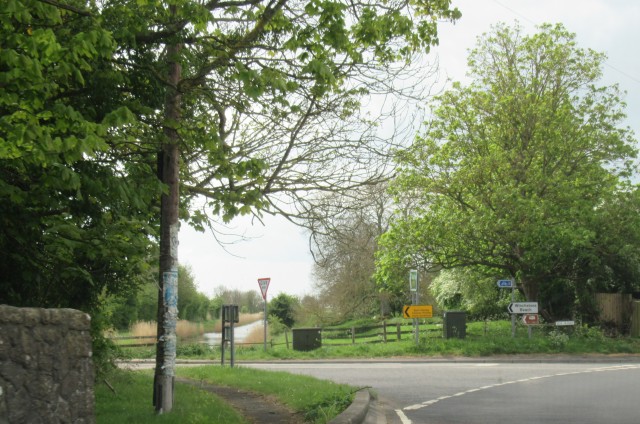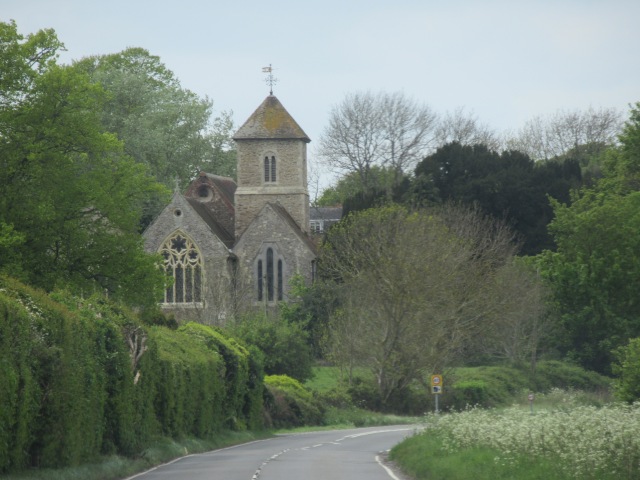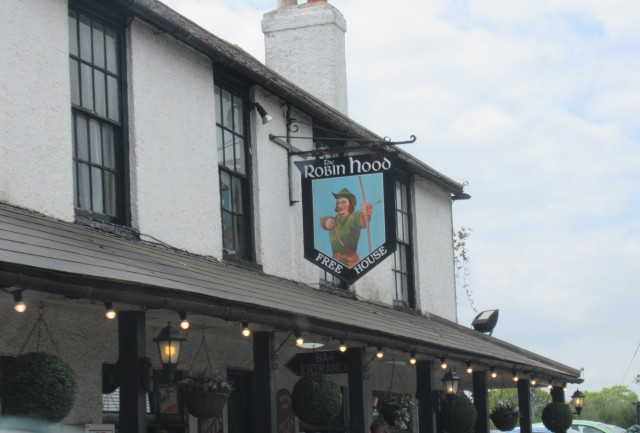Under Construction
Keziah Barden nee Butcher(s)
This page is about the ancestral lines of Keziah Barden nee Butcher(s), my paternal 4 x great grandmother from Sussex. Her family was connected with Icklesham, Winchelsea, Hastings, Rye, Hooe and Guestling in Sussex, as well as Kent in England. Mostly I have not been able to trace any ancestral lines beyond the 16th Century, other than possibly the Barden lines. Though there are questions about some of the possible ancestral lines, eg Hardisty/Hardesty.
Butcher(s)
Thomas Butcher (1747 Icklesham Sussex – 1819 Icklesham Sussex) – Mary Cloke (1755 Sussex Icklesham – 1824 Icklesham Sussex) – see Mary’s ancestral line in Cloke – Cloake section below.
- Keziah Butchers (1789 Icklesham Sussex -1819 Winchelsea Sussex ) – George Barden (1789 Hooe Sussex – )
- Charles Barden (1815 Winchelsea Sussex – 1851 Sydney Australia) – Harriet Easton (Fraser) (1816 Icklesham Sussex – 1904 Camden NSW Australia).
Cloke – Cloake
A Possible Cloke / Cloake Lineage down to Charles Barden (1815 Winchelsea Sussex – 1851 Sydney Australia)
The earliest suggested Cloke/Cloake line ancestors of Charles Barden (1815 Winchelsea Sussex – 1851 Sydney Australia) are possibly Robert Cloke and Catherine Coxe, from the late 16th – early 17th Centuries.
Robert Cloke (1583 – ) married in 1603 in Hastings Sussex to Catherine Coxe (1583 Rye Sussex – ) – their children were baptised in Rye Sussex – note there is no additional information on Robert Cloke and Catherine Coxe’s ancestral lines.
- Richard Cloke (1603 Rye Sussex – Baptised 1603 Rye – 1678 Guestling Sussex) – Ann Tihurst (1603 Sussex – 1677 Guestling Sussex) – see Tihurst – Taylor section below for Ann’s ancestral lines
- Moses Cloke (1634 Hastings Sussex – 1688 Guestling Sussex) – Ann (speculatively Hardisty?) (1633? Sussex or Hampsthwaite Yorkshire ? – 1679 Guestling Sussex)
- John Moses Cloke (1660-1665 Guestling Sussex – 1716 Guestling Sussex) – Anne Bird (1666 Guestling Sussex – 1722 Guestling Sussex)
- Moses Cloke (1686 Guestling – 1730 Icklesham Sussex) – Mary Brattle (1690 Sussex – 1737 Guestling {of Icklesham Sussex})
- Abraham Cloke (1710 Sussex – 1789 Icklesham Sussex) married Ann Noakes (1710 Sussex – 1773 Icklesham Sussex), daughter of Richard Nokes
- Mary Cloke (1755 Icklesham Sussex – 1824 Icklesham Sussex) married in 1779 to Thomas Butcher(s) (1747 Icklesham Sussex- 1819 Icklesham Sussex)
- Keziah Butchers (1789 Icklesham -1819 Winchelsea ) – George Barden (1789 Hooe Sussex – )
- Charles Barden (1815 Winchelsea Sussex – 1851 Sydney Australia) – Harriet Easton (Fraser) (1816 Icklesham Sussex – 1904 Camden NSW).
- Keziah Butchers (1789 Icklesham -1819 Winchelsea ) – George Barden (1789 Hooe Sussex – )
- Mary Cloke (1755 Icklesham Sussex – 1824 Icklesham Sussex) married in 1779 to Thomas Butcher(s) (1747 Icklesham Sussex- 1819 Icklesham Sussex)
- Abraham Cloke (1710 Sussex – 1789 Icklesham Sussex) married Ann Noakes (1710 Sussex – 1773 Icklesham Sussex), daughter of Richard Nokes
- Moses Cloke (1686 Guestling – 1730 Icklesham Sussex) – Mary Brattle (1690 Sussex – 1737 Guestling {of Icklesham Sussex})
- John Moses Cloke (1660-1665 Guestling Sussex – 1716 Guestling Sussex) – Anne Bird (1666 Guestling Sussex – 1722 Guestling Sussex)
- Moses Cloke (1634 Hastings Sussex – 1688 Guestling Sussex) – Ann (speculatively Hardisty?) (1633? Sussex or Hampsthwaite Yorkshire ? – 1679 Guestling Sussex)
Noakes
I have a number of DNA matches who have Noakes/Nokes ancestry from Sussex or Kent, however there are none that I can place in a family tree. Also I have not been able to find any more Noakes/Nokes ancestors beyond Ann Cloake nee Noakes and her father Richard Nokes, as shown in the Cloake/Cloke Section.
Brattle
I have found several DNA matches with Brattle descendants
Bird
While I have many DNA matches with Bird descendants I have not been able to find any with Sussex English Bird ancestry. Nor have I been able to identify any ancestors beyond Anne Cloake nee Bird as shown in the Cloake/Cloke Section.
Tihurst – Taylor
Moses Tihurst (1571 Heathfield Sussex – 1623 Heathfield Sussex ) – Margaret Taylor (1573 Heathfield Sussex – 1633 Heathfield Sussex), daughter of Richard Taylor (1549 Heathfield Sussex – ) and Katherine (1545 Heathfield Sussex – )
- Ann Tihurst (1603 Tihurst – 1677 Guestling Sussex) – Richard Cloke (1603 Rye Sussex – 1678 Guestling Sussex) – see Cloake/Cloke section above for Richard’s ancestral lines
Barden – see main Barden web page
- George Barden (1789 Hooe Sussex – ) – Keziah Butchers (1789 Icklesham -1819 Winchelsea ) – see Butcher(s) section above for Keziah’s ancestral lines
- Charles Barden (1815 Winchelsea Sussex – 1851 Sydney Australia) – Harriet Easton (Fraser) (1816 Icklesham Sussex – 1904 Camden NSW) – they emigrated from England in 1838 on the “James Pattison” and arrived in Sydney on December 11 1838. This ship had been previously used as a convict transport ship – 1,
………………………………………………………………………………………………………………………………………………………………….
Hardisty – this may or may not be of relevance
Some suggest that the Maiden Name of Ann wife of Moses Cloke (1634 – 1688) was Hardisty. Initially I accepted this but now I am more reserved at this possibility.
Reviewing my DNA matches, there appears to be alternative spellings for Hardisty or Hardesty and Hardester. All of the DNA matches are in the USA, and mostly with Maryland origins but with only several of these trace back to an English origin ie in Hampsthwaite in Yorkshire in the 16th Century. These appear to be from Thomas Hardisty and his son Francis Hardisty who emigrated to the USA after 1678. Apparently Hampsthwaite Yorkshire seems to be an area associated with my Hardisty ancestry.
After learning of this, I have wondered how Ann Hardisty came to move from Hampsthwaite Yorkshire down to Guestling in Sussex ? Or had her husband Moses Cloake travelled from Guestling up to Hampsthwaite – a question unlikely to be answered. Then fundamentally – was Ann Cloake nee Hardisty really connected to the Hampsthwaite Yorkshire Hardisty’s? And yet the number of Hardisty/Hardesty DNA matches with Hampsthwaite – Maryland ancestral origins tends to support this connection. Most of these Hardisty/Hardesty DNA matches are at Ancestry.com, with several at MyHeritage, although one of the Hardisty/Hardesty descendants may also be a match along Hicks-McKenzie-McLean-McIntosh lines given the triangulated match with a descendant of George Hicks, brother of my maternal great grandmother Edith Florence Joy nee Hicks.
There is an interesting overview of 45 years of research into the Hardisty name & family in Geni – said to originate from a place name in Yorkshire – “from a locality in the West Riding of Yorkshire, England. The name is, as shown above, Heardwulfstig, which being translated into modern English from the Anglo-Saxon, means Hardwolf’s Path. Who was Hardwolf?? He was, apparently, a Saxon landowner of pre-Norman times in Fewston Parish, Yorkshire. Hardwolf was in time spelled Hardulf or Hardolf. The Poll Tax records for the West Riding of Yorkshire in the year 1379 show a Stephanus and a Johannes de Hardolfsty, both from the village of Timble Great, or Great Timble as it is known today. From Fewston, Hardestys spread into surrounding parishes, with the parish of Hampsthwaite being one of the major sources of the colonial Hardestys.”
See also the Hardesty Web Site
A possible Hardisty/Hardesty lineage :
Stephen William Hardesty/Hardisty (1550 Fewston Yorkshire – 1619 Thruscross Fewston Yorkshire)
- William Hardisty (1557 Birstwith Hampsthwaite Yorkshire – 1661 Hampsthwaite Yorkshire)
- William Hardisty (1605 – Hampsthwaite Yorkshire – 1674 Hampsthwaite Yorkshire) – Alice Lowcock (1604 Hampsthwaite Yorkshire – 1674 Hampsthwaite Yorkshire) or possibly Ann’s father was Arthur Hardisty who had married Dorothy – however their daughter Ann married a Wright ?
- Ann Hardisty (c.1633 – 1679) associated with both Guestling Sussex and Hampsthwaite Yorkshire – Moses Cloake (1634 Hastings Sussex – 1688 Guestling Sussex) – see Moses’ ancestral line in Cloake/Cloke section above – note Ann and Moses’ child Elizabeth also died in 1679 – it seems Ann also died after childbirth ?
- Thomas Arthur Hardisty (1641Hampsthwaite Yorkshire – 1690 Patapsco Baltimore Maryland USA ) – Mary Favell (1633 Burnsell Yorkshire – ). Thomas was possibly my 10th great uncle and an ancestor of some of my DNA Maryland Hardisty – Hardesty line matches
- Francis Hardisty (1671 Hampsthwaite Yorkshire – 1734 Anne Arundel Maryland)
- William Hardisty (1605 – Hampsthwaite Yorkshire – 1674 Hampsthwaite Yorkshire) – Alice Lowcock (1604 Hampsthwaite Yorkshire – 1674 Hampsthwaite Yorkshire) or possibly Ann’s father was Arthur Hardisty who had married Dorothy – however their daughter Ann married a Wright ?
………………………………………………………………………………………………………………………………………………………………….
Travelling in Sussex
We travelled in Sussex in May 2019, and experienced a lot of grey, misty and sometimes damp days in these areas of south eastern England.
Rye
Rye, where the high land of the Weald meets the coast, was originally located on the seafront and has had harbours dating back to Roman times. As the sea receded, the Romney marsh formed. Rye was often invaded by the French and Spanish, ultimately it became one of the Cinque Ports in 1336. Being a Cinque Port meant it was exempt from tax, in return for maintaining ships for defence. Apparently at one stage it was under rule of the Benedictine Abbey of Fecamp in France, but returning to English rule under Edward III in 1247., after which its fortifications were strengthened. With its south eastern coastal location, it’s no surprise that it was one of the centres of smuggling.

At Rye – Winchelsea Harbour Road intersection
Icklesham
Icklesham is in East Sussex in the High Weald.
From the Icklesham.com website : “The name Icklesham (which was possibly derived from Anglo Saxon – Iclingas Ham the home of the Iclas family) was recorded in 772 as Icoleshamme, in a land charter signed by Offa, King of Mercia. The village was probably a prime target during the invasion by the Normans in 1066 as in earlier times it dominated the river Brede. This strategic importance led, some seven hundred years later to evacuation plans being drawn up in case of invasion by Napoleon.”
Note – The village is also known for Paul McCartney’s recording studio in the old Hogs Hill windmill.



All Saints and St Nicolas Icklesham – with its tall Norman tower, it is believed to date from the 12th Century. Apparently it was altered in the Victorian era – 1, 2, 3, 4, 5,



Street scene in Icklesham looking toward the Robin Hood in the left background

We hoped to lunch at the Robin Hood, however it was booked out.
Guestling – Guestling Green & Guestling Thorn
We didn’t see the church of St Laurence which dates from Saxon times – and which has a Norman tower – villagenet.
Winchelsea
Winchelsea and its church, St Thomas Martyr, date from 1288.
In 1803 there was a Thomas Butchers, Labourer of Winchelsea who was a Volunteer in the Cinque Ports Winchelsea, though there had been an earlier town, Old Winchelsea, which was destroyed by the sea and a flood. The town has been a Cinque Port, with its church and town were attacked by the French in the 14th Century during the 100 Years War.
Winchelsea is known for its church, St Thomas the Martyr, and graveyard
We found Connie Barden’s grave there – just near Spike Milligan’s with its Celtic Cross and Gaelic “I told you I was sick”.




































